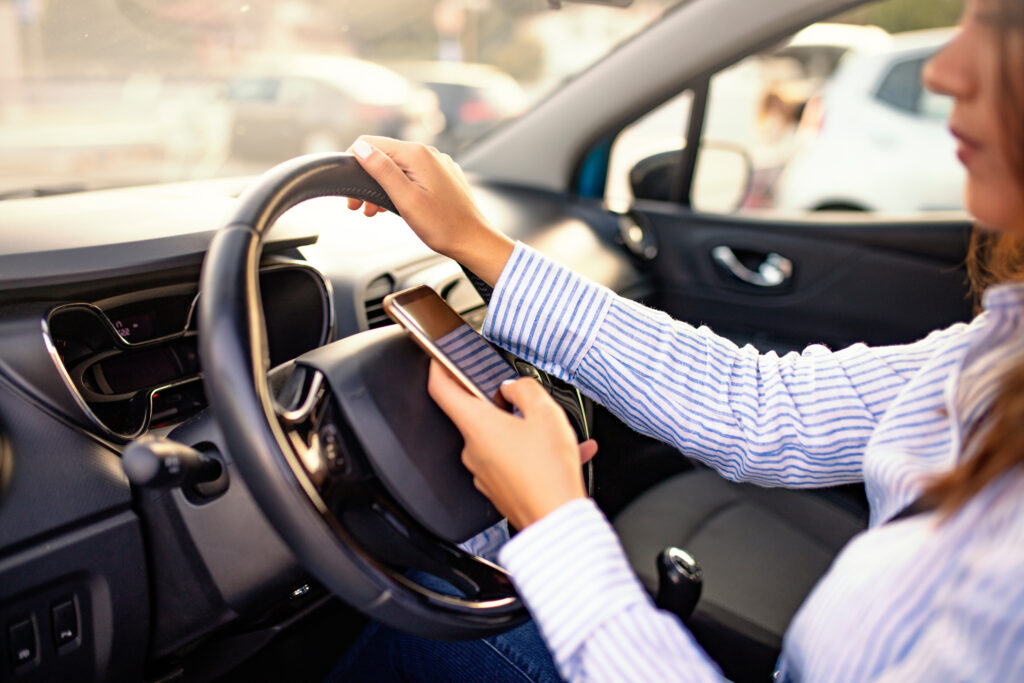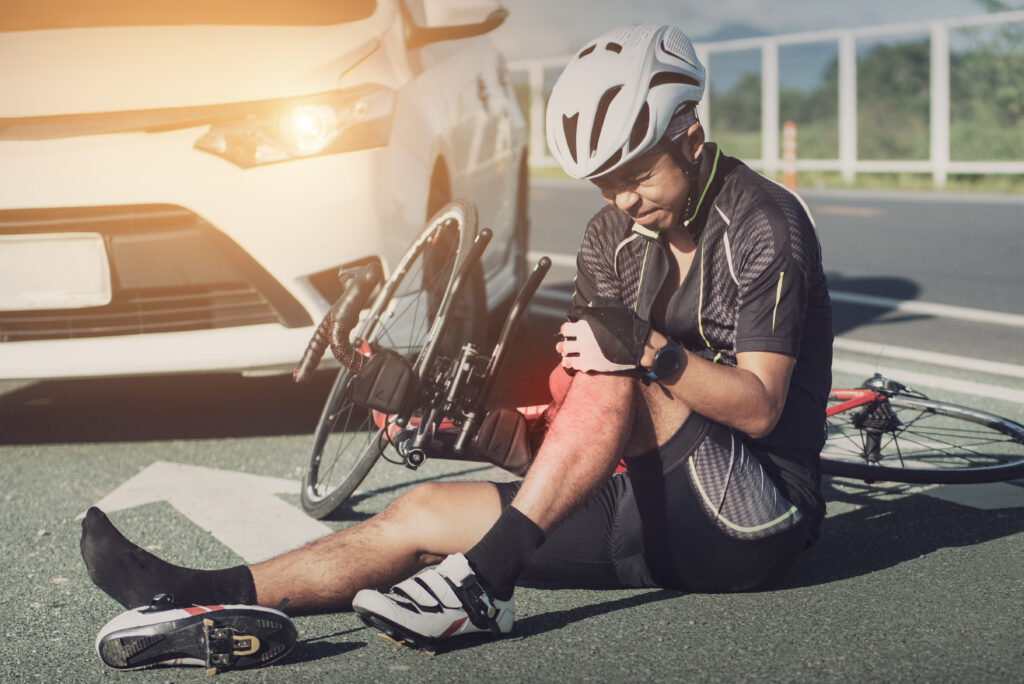
Distracted driving injures cyclists more often than you might think. With the rise of texting and other distractions, distracted driving injures cyclists, putting them at increasing risk. This article will cover the impact of distracted driving on cyclists, the common causes of these distractions, and essential safety tips for urban riders. Additionally, we will discuss the importance of bicycle safety through educational initiatives that teach essential traffic laws and safer riding practices.
Key Takeaways
Distracted driving significantly increases the risks of bicycle accidents, with cyclists being particularly vulnerable due to their lack of protection.
Everyday activities such as phone use, eating, and adjusting the radio contribute to distracted driving, leading to various types of dangerous incidents involving cyclists.
Infrastructure improvements, public awareness campaigns, and vigilant riding practices are crucial for enhancing cyclist safety against distracted driving.
Understanding Distracted Driving
Distracted driving is a serious issue that affects road safety, particularly for vulnerable road users like bicyclists. It is defined as any activity that diverts a driver’s attention away from the task of driving. Common distractions include:
Using a cell phone or other electronic device while driving
Eating or drinking while driving
Talking to passengers or engaging in conversations with other drivers
Adjusting the radio, climate control, or other vehicle settings
Grooming or personal hygiene while driving
Reading or looking at maps or other materials while driving
Engaging in any other activity that takes a driver’s eyes off the road or hands off the wheel
Distracted driving can lead to accidents, injuries, and fatalities. According to the National Highway Traffic Safety Administration (NHTSA), distracted driving was responsible for 3,308 deaths in motor vehicle crashes in 2022. Bicyclists are particularly vulnerable to distracted drivers due to their smaller footprint and less protective barrier compared to cars. This makes it crucial for drivers to maintain their focus on the road and avoid any activities that could divert their attention.
The Impact of Distracted Driving on Cyclists
Bicycle injuries and fatalities have become a pressing issue on American roads. In 2022, distracted driving claimed 3,308 lives, and cyclists are particularly vulnerable due to their smaller footprint and lack of protection. Traffic safety facts highlight that distracted driving is a leading cause of accidents, with severe consequences for all road users. The trend of fatalities among cyclists due to distracted driving is on the rise, making up an increasing share of cycling-related deaths, including distracted driving related fatalities. This isn’t just about numbers; these statistics represent real lives lost and families devastated by preventable accidents.
The rise in distracted driving poses a severe threat to all road users, but cyclists bear the brunt of this danger. With 83.5% of bicycle fatalities from distracted driving being male in 2022, it’s clear that certain demographics are more at risk. Cyclists accounted for 3% of all deaths on roads that year, a sobering figure that underscores the need for immediate action. Distracted driving is a growing danger on the roads. It poses a significant threat to overall road safety.
Cyclists must constantly be on high alert, as distracted drivers significantly increase the risk of accidents. Whether it’s due to texting, eating, or simply not paying attention, the chances of a collision escalate when a driver’s focus is anywhere but on the road.
In urban areas with high traffic volume, this danger is amplified, making it crucial for cyclists to adopt defensive riding techniques and remain vigilant.
Common Causes of Driver Distractions
Distracted driving encompasses any activity that diverts a driver’s attention from driving. The National Highway Traffic Safety Administration (NHTSA) defines it as engaging in activities like using a technological device or other inattentive behaviors. One of the most notorious distractions is cell phone use, which accounts for 18.6% of distracted driving-related crashes. Texting, in particular, is exceedingly dangerous, as it can divert attention from the road for about five seconds, enough time to cover the length of a football field at 55 mph. Distracted driving laws aim to address these dangerous behaviors.
Before:
However, it’s not just cell phones that are the culprits. Everyday activities such as adjusting the radio, eating, drinking, and even personal grooming while driving fall under inattentive or careless driving. These activities might seem harmless but can lead to significant lapses in attention and increased reaction times, making it difficult to respond to sudden changes in traffic or the presence of cyclists.
After:
Everyday activities that contribute to inattentive or careless driving include:
Adjusting the radio
Eating
Drinking
Personal grooming
These activities might seem harmless but can lead to significant lapses in attention and increased reaction times, making it difficult to respond to sudden changes in traffic or the presence of cyclists.
The cognitive distractions are perhaps the most insidious. These occur when a driver’s mind wanders away from the task of driving. Daydreaming, being deep in thought, or dealing with emotional stress can all lead to a dangerous reduction in a driver’s attention.
Recognizing these distractions highlights the importance of maintaining a focus on driving to prevent accidents.
Types of Bicycle Accidents Involving Distracted Drivers

The types of bicycle accidents involving distracted drivers are varied, each presenting unique dangers to cyclists. One common scenario is when distracted drivers fail to yield the right of way at intersections. Intersections are particularly hazardous for cyclists, as drivers may be preoccupied with their devices or other distractions, leading to catastrophic collisions.
Bike paths are also relevant locations for accidents involving pedestrians and cyclists, contributing to a broader understanding of traffic safety. Analyzing crash data from the Fatality Analysis Reporting System (FARS) helps identify these critical areas.
Another frequent type of accident occurs when drivers turn left into the path of a cyclist. This can happen when the driver is distracted and doesn’t see the cyclist approaching. Similarly, right-hand turns can be perilous, as drivers may ignore cyclists with the right of way and turn into their path. Distraction and reduced reaction time often cause these accidents, leading to severe consequences for cyclists.
Another significant risk is dooring incidents. These occur when a driver or passenger opens a motor vehicle door into the path of an oncoming cyclist. Cyclists can avoid these incidents by maintaining a safer distance from parked cars, but the unpredictability of distracted drivers makes this a constant threat.
Additionally, side-swiping incidents can occur when a driver fails to maintain proper distance from a cyclist, often due to inattention. Finally, rear-end collisions can happen if a distracted driver does not keep a safer distance from a bicycle, leading to serious injuries or fatalities.
Legal Consequences for Distracted Drivers
The legal consequences for distracted drivers are significant and vary by jurisdiction. In Texas, fines for distracted driving can reach up to $500 for a first offense, with penalties escalating for repeat violations. Local ordinances may impose additional penalties, sometimes resulting in fines as high as $500 for using handheld devices while driving. Young drivers in Graduated Driver Licensing (GDL) states face even stricter penalties, including automatic license suspension for distracted driving violations.
Criminal charges, such as reckless driving or manslaughter, may result from accidents caused by distracted driving, particularly if they lead to injury or death. Distracted drivers can be held liable for injuries or damages, meaning they may be responsible for compensating victims. In these cases, consulting a specialized lawyer can help navigate the complexities of distracted driving claims and ensure fair compensation for the injured party.
Beyond the immediate legal ramifications, distracted driving carries long-term consequences for drivers, especially when accidents involve cyclists. These legal ramifications underscore the importance of following traffic laws and maintaining a distraction-free driving environment to protect all road users.
Vulnerable Road User Laws
Vulnerable road user laws are designed to protect bicyclists, pedestrians, and other vulnerable road users from the dangers of distracted driving. These laws vary by state, but they often include provisions such as:
Increased penalties for drivers who injure or kill vulnerable road users
Strict liability laws that presume the driver to be at fault in accidents involving vulnerable road users
Laws that require drivers to yield to vulnerable road users or give them a safer passing distance
Laws that prohibit distracted driving and impose penalties for drivers who engage in distracting activities while driving
These laws are designed to promote road safety and reduce the number of accidents involving vulnerable road users. By holding drivers accountable for their actions and promoting safer driving practices, vulnerable road user laws can help to create a safer environment for bicyclists and other vulnerable road users. These legal measures are crucial in fostering a culture of responsibility and awareness among drivers, ultimately contributing to safer roads for everyone.
Safety Tips for Cyclists to Avoid Distracted Drivers
Cyclists need to stay vigilant and plan strategically to remain safer on the road. Using bike lanes whenever possible can reduce collision risks, but attention to auditory distractions is also necessary. Research shows that cyclists are often distracted by using headphones, which can impair their ability to hear oncoming traffic and other critical sounds.
Another essential tip is to wear helmets and use proper lighting. These measures can significantly reduce the risk of serious injury in the event of an accident. Cyclists should also avoid using electronic devices while riding, as this behavior is a growing concern and can lead to dangerous situations.
Cyclists should remain aware of their surroundings and anticipate potential hazards. This includes watching for turning vehicles, maintaining a safer distance from parked cars to avoid dooring incidents, and being prepared to take evasive action if necessary. By following these safety tips, cyclists can better protect themselves from the dangers posed by distracted drivers.
Enhancing Infrastructure to Protect Cyclists
Improving infrastructure is key to enhancing cycling safety and reducing the risk of bicycle accidents. Protected bike lanes, which are equipped with physical barriers, have been shown to reduce accident rates by over 50% compared to conventional bike lane bicycle lanes. These lanes create dedicated bike lanes for cyclists, keeping them apart from motor vehicles and lowering collision risks.
Redesigning intersections also significantly enhances cyclist protection. Incorporating bike boxes and dedicated bicycle signals at intersections can greatly improve visibility and safety for cyclists. Buffered bike lanes, which create safer distances between parked cars and cyclists, further reduce the risk of dooring incidents.
Maintaining consistent street conditions, proper lighting, and implementing traffic calming measures are key to cyclist safety. These infrastructure improvements not only protect cyclists but also encourage more people to take up cycling as a safer and viable mode of transportation in urban areas.
Public Awareness Campaigns for Distracted Driving
Public awareness campaigns are instrumental in educating drivers and cyclists about the dangers of distracted driving. Initiatives like NHTSA’s ‘Put the Phone Away or Pay’ campaign emphasize the risks associated with texting while driving and encourage individuals to commit to avoiding distractions. These campaigns use diverse media, such as social media, posters, and community events, to effectively spread their message.
Local advocacy groups play a vital role in these campaigns by:
Building community support
Enhancing outreach through inclusive messaging
Forming coalitions with diverse community voices to amplify the impact of safety initiatives
Community engagement and relationships with local officials and media are essential for fostering support for cycling safety initiatives.
Role of Local Advocacy Groups in Promoting Cycling Safety
Local advocacy groups play a key role in promoting cycling safety by lobbying for improved laws and infrastructure. They work tirelessly to enforce legal protections for cyclists, such as Vulnerable Road User Laws, which impose stricter penalties for drivers who harm cyclists at the local bike shop.
Advocacy groups also prioritize equitable infrastructure investments, focusing on underserved areas to ensure access and safety for all cyclists. Their efforts in law advocacy and community education significantly impact cycling safety and public awareness.
What to Do If You're Injured by a Distracted Driver

If injured by a distracted driver, seek medical attention immediately. Your health and safety are the top priorities. After ensuring safety, gather evidence to support your case by taking pictures of the accident scene and collecting contact information from involved parties.
Witness testimonies can significantly support your case, so seek them out at the scene if possible. Seeking legal advice from a bicycle accident lawyer can help protect your interests and navigate your claim’s complexities.
In critical situations, hiring a bicycle accident attorney can ensure fair compensation for your injuries and damages.
Legal Representation for Bicycle Accidents
If you or a loved one has been involved in a bicycle accident, it is important to seek legal representation as soon as possible. A bicycle accident lawyer can help you navigate the legal process and ensure that you receive the compensation you deserve.
A bicycle accident lawyer can help you in several ways, including:
Investigating the accident and gathering evidence to support your claim
Negotiating with insurance companies to secure a fair settlement
Representing you in court if a settlement cannot be reached
Providing guidance and support throughout the legal process
When choosing a bicycle accident lawyer, it is important to consider several factors, including:
Experience: Look for a lawyer with experience handling bicycle accident cases.
Reputation: Research the lawyer’s reputation online and ask for referrals from friends or family members.
Communication: Choose a lawyer who is responsive to your needs and communicates clearly and effectively.
Fees: Consider the lawyer’s fees and ensure that they are reasonable and transparent.
By seeking legal representation, you can ensure that your rights are protected and that you receive the compensation you deserve for your injuries and losses. A knowledgeable bicycle accident lawyer can be a crucial ally in your recovery process, helping you to navigate the complexities of the legal system and achieve a fair outcome.
Summary
In summary, distracted driving poses a significant threat to cyclists, making it essential to understand the risks and take proactive measures to stay safer. From understanding the impact of distracted driving and common causes to knowing what to do if you’re injured, this knowledge can help protect cyclists and promote safer road environments. By following safety tips, supporting infrastructure improvements, and participating in public awareness campaigns, we can create a safer future for all road users.
Frequently Asked Questions
What is defined as distracted driving?
Distracted driving is defined as any activity that diverts attention from driving, including texting, eating, or interacting with passengers. Such distractions significantly increase the risk of accidents and should be avoided to ensure road safety.
What are the common causes of distracted driving?
The primary causes of distracted driving are cell phone use, eating or drinking, adjusting the radio, and personal grooming, along with cognitive distractions such as daydreaming. Reducing these activities can significantly enhance road safety.
What legal consequences do distracted drivers face?
Distracted drivers may encounter fines, criminal charges such as reckless driving or manslaughter, and could be held liable for injuries or damages. The specific penalties depend on local laws.
How can cyclists stay safer on the road?
To ensure safety on the road, cyclists should utilize bike lanes, remain alert, wear helmets, use appropriate lighting, and avoid distractions. These measures significantly reduce the risk of accidents.
What infrastructure improvements can protect cyclists?
Protected bike lanes and intersection redesigns with dedicated signals significantly improve cyclist safety. Implementing these infrastructure enhancements creates a safer riding environment for all cyclists.


